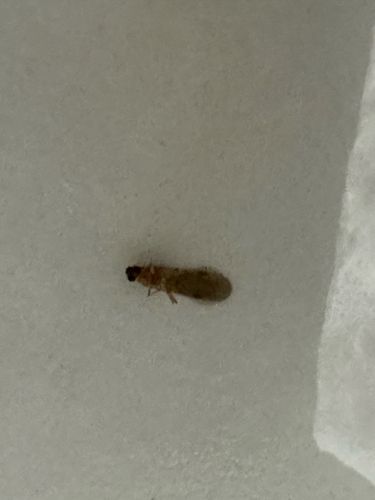Termite Alate (Swamer)
Scientific Name: Isoptera (various species)
Order & Family: Blattodea, Rhinotermitidae (subterranean termites) or Kalotermitidae (drywood termites) among others
Size: Typically 6 to 12 mm (0.2 to 0.5 inches) in length, including wings, though some species may be larger.

Natural Habitat
Termite alates emerge from established colonies to reproduce. They are often found swarming in and around structures, especially during certain seasons or after rain, seeking new locations to establish colonies. They prefer dark, damp, and undisturbed environments for nesting.
Diet & Feeding
Alates themselves do not feed once they swarm. Their purpose is reproduction. Termites in general (workers) feed on cellulose-based materials such as wood, paper, fabric, and plant matter.
Behavior Patterns
Alates are the reproductive caste of a termite colony, also known as swarmers. They are winged and emerge from mature colonies, often in large numbers, to mate and establish new colonies. After finding a mate, they shed their wings and search for a suitable nesting site. Their presence, particularly indoors, indicates a nearby active termite infestation.
Risks & Benefits
Risks: Termite alates themselves are not harmful to humans, but their presence is a strong indicator of an active termite infestation that can cause significant structural damage to homes and other buildings. They can weaken wooden structures, leading to costly repairs. Benefits: In natural ecosystems, termites play a beneficial role in breaking down dead wood and other cellulose material, returning nutrients to the soil.
Identified on: 11/9/2025